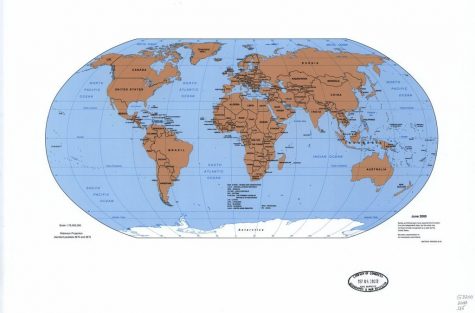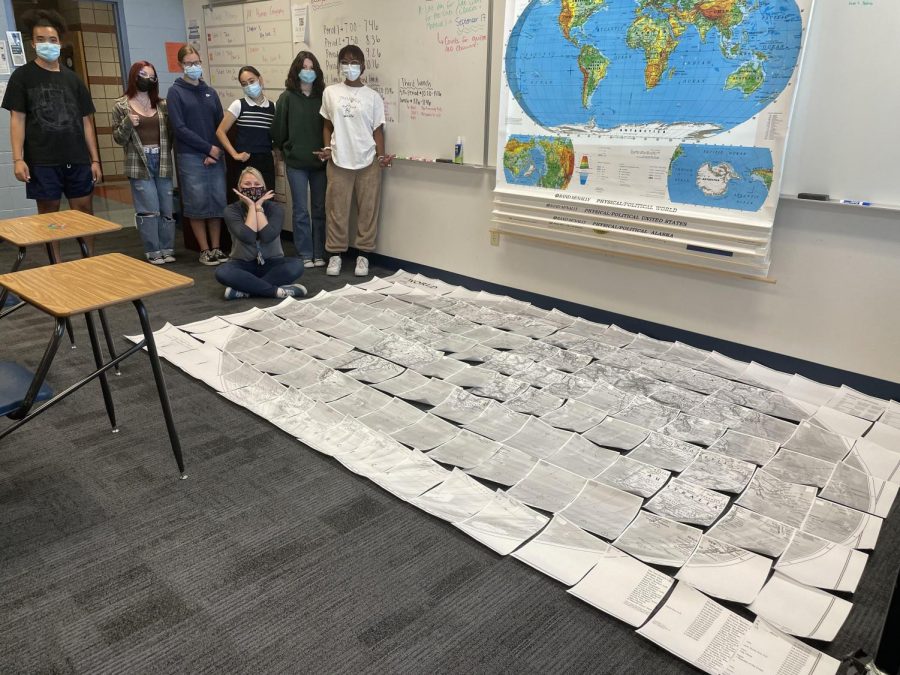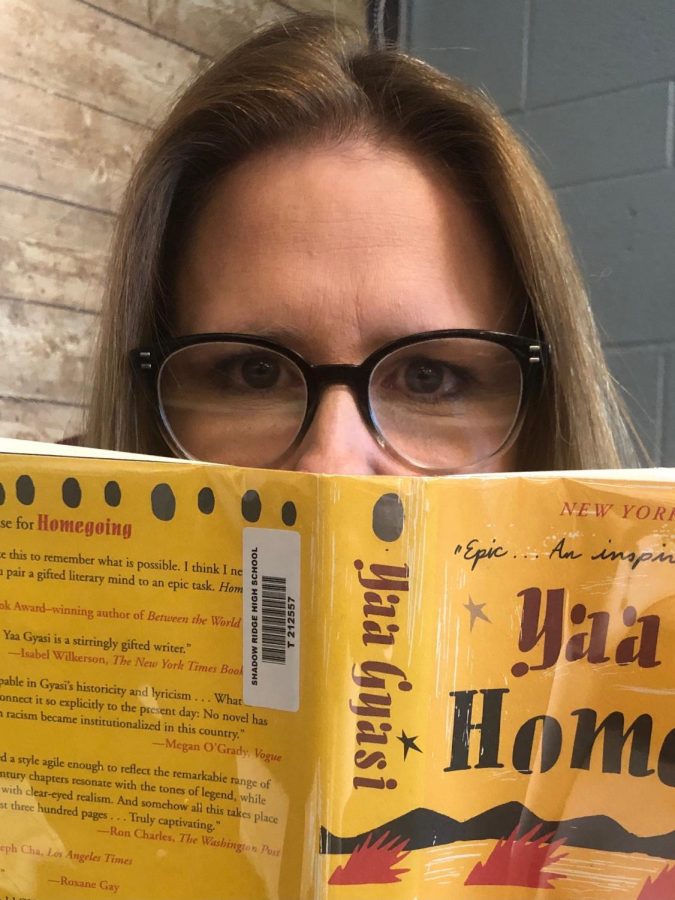Fixing a Messy World
Photo Courtesy of: Jaycie Weeks
Students complete a world puzzle.
October 6, 2021
Students taking AP Human Geography had an interesting day when they walked into the classroom and were assigned to put 132 puzzle pieces together to create a map of the world. Teacher Jaycie Weeks, who has been teaching AP Human Geography for 2 years, decided that instead of doing the usual writing activity, she would challenge her students by assigning them to put a puzzle of the world together.
Organizing and arranging the 132 randomly mixed pieces was much harder than the students were expecting it to be. They faced challenges like figuring out where an open ocean goes and working within a very strict time constraint. Students really had to work together and use their knowledge of the world to put it together before the period ended.
“I wanted to show the students various map skills, and challenge the students and their knowledge of the world map,” says Weeks, “It really requires a lot of teamwork and them using their brains to puzzle the world together by very minor pieces.”
Sophomore Kyla Wittwer says, “As you could imagine, the map was very large and there isn’t a lot of floor space in classrooms, so we had to scrounge for space.”
Through all these challenges, the students were still able to complete the puzzle in around 30 minutes. The class had to use many strategies to be able to overcome the challenges of putting together a world map puzzle.
Sophomore Amani Mitchell says, “First we started with finding the corners and edges because that was the easiest, the clocks and keys at the bottom and top, and after we just started finding pieces to all the countries and oceans which all eventually fit together nicely.”

This, and activities like these, really allow the students to show their skills and knowledge on the topics that they had previously learned. It also gives the students a voice about their opinions and how they feel about the subject matter.
“In an average day in AP Human Geography, we usually take notes on the key topics of a chapter out of the AP Human Geo book. At least once a week, we do an interesting assignment that relates back to what we had learned from the chapter.”
After having been online for the past year, doing in-person activities like these are much more engaging and challenging for the students. There are sure to be more challenges to come for the students in AP Human Geography over the course of this exciting year.








